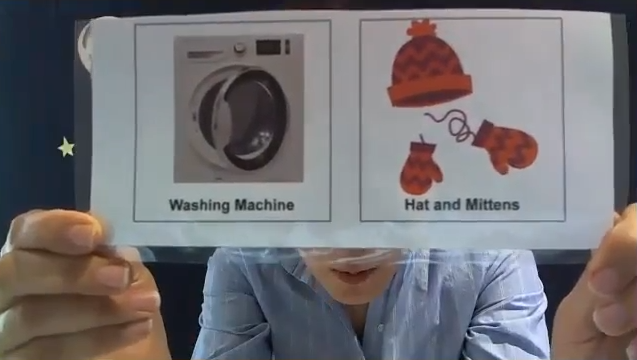May 27th, 2020
Activity Summary
At this session, the activities were focused on giving basic one-action instructions to a robot in a virtual environment to achieve a specific goal. The session started by sharing a video about what robots are (Video Link). After watching the video, one facilitator showed students a series of pictures, two at a time, and asked them to identify the ones they considered to be a robot.
In the following activity, one facilitator played the role of a robot. Each student was given a card with one action (arrow) on it. Students were tasked to give their robot an instruction by choosing that card and the facilitator would move accordingly.
Main Activity (Space Mission): As the final activity, a backdrop was set up to create a setting that included the starting point (earth), and destinations (moon and stars). Students needed to use their arrow to give their robot (rocket) instruction on how to get to the moon and return to earth.
Following the activity, participants were asked to select whether they enjoyed the activity.
Goals
- Introducing students to a virtual setting
- Introduce the concept of robots
- Scaffold understanding for building a basic one-direction, one-action sequence
Notes from the session
- Two students present had varying degrees of comfort with a virtual setting (i.e. Zoom). One student understood the task. Another student was working on becoming more familiar and comfortable with new faces and a new virtual environment to interact with
- Hand-over-hand support was provided in selecting actions to encourage participation
- Both participants required someone to hold the card with action (i.e. arrow) labeled on it and verbally directed participants’ attention to the paper
- Rewarding messages seemed to help students focus on a task
- Both participants rated as having enjoyed the activity at the end of the session
- Both participants had higher energy and had a preference to move around over sitting still
- Both participants were able to focus on a few activities, each with a short duration of 5 to 10 minutes, and the whole session was approximately 30 minutes. The duration and time (in the afternoon) were well received by students and parents
- Parents suggested to include an interactive piece over the paper (e.g. using iPad)
Notes for C2LC design
- The visual elements that were visible on the screen had good contrast and were child friendly
- Both students have personal communication devices that have common elements, such as ‘up’, ‘down’, ‘left’, ‘right’, ‘yes’, and ‘no’. If these devices could be connected to the prototype, they could be used to give instructions to a virtual robot
- Incorporating sound effects and/or music could provide auditory cues to guide the user to engage with different elements of the interface in sequence
- Participants were able to rotate the one direction arrow and point toward the location they wanted their robot to move to

